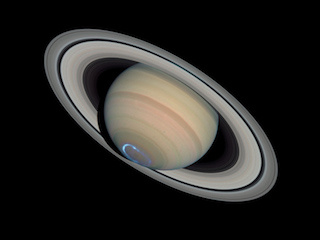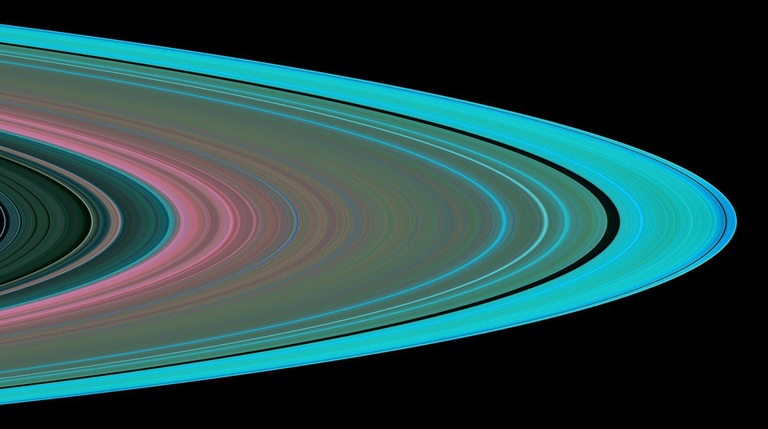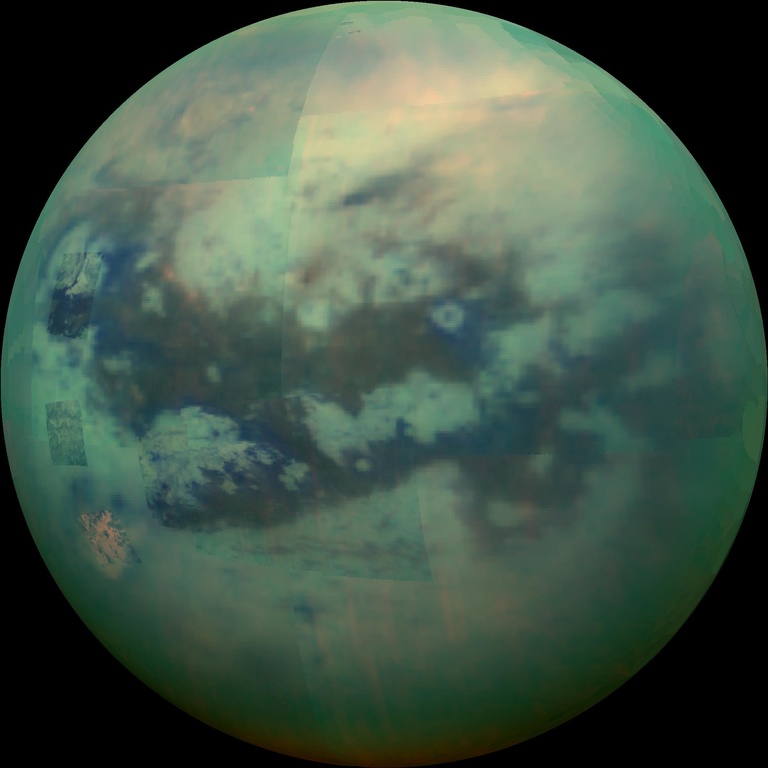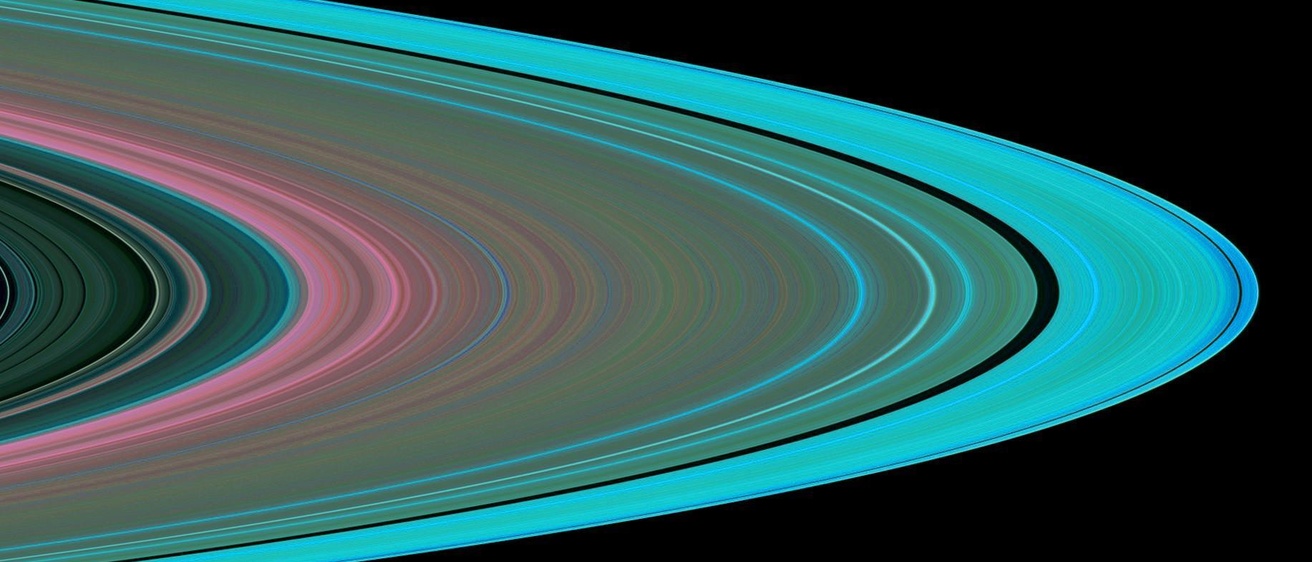For 13 years, the University of Iowa has had a front-row seat on NASA’s Cassini mission to Saturn, thanks to a radio- and plasma-wave instrument designed by a team of engineers and scientists in the UI Department of Physics and Astronomy.
The instrument has studied Saturn’s auroras, rings, and months-long storms, among other findings that “were not anticipated” but raised exciting new questions about Saturn and its environs, says UI research scientist Bill Kurth.
Here is a list of six top discoveries from UI’s radio- and plasma-wave instrument, which will cease to function when Cassini enters its final orbit on Sept. 15 and disintegrates in Saturn’s atmosphere.
1. Saturn’s aurora

The UI research team directly studied the source of strong radio emissions tied to the planet’s aurora, Saturn’s equivalent of the northern and southern lights. Doing so allowed them to compare Saturn’s radio emissions with earthly phenomena.
The researchers found both similarities and differences; for example, it appears that the strength of the solar wind blowing on Saturn’s magnetosphere (a magnetic field that extends well beyond the planet into space) contributes to the intensity of the auroras. This is similar to what happens on Earth. However, it appears that the energy of the electrons driving the aurora at Saturn may be substantially greater than Earth’s, a difference that will require more study.
2. Saturn’s storms

The UI team observed and monitored thunderstorms in Saturn’s atmosphere, including a once-in-a-Saturn-year (29 Earth years) storm that enveloped much of the planet’s northern hemisphere.
The observation allowed the team to compare the occurrence of thunderstorms on Saturn with that of those on Earth. Though thunderstorms are much more common on our own planet, Saturn’s big storms last for weeks or even months. Saturn has plenty of water, but only about 1 percent of the energy that drives thunderstorms on Earth. This means that it takes longer to “recharge” the system after one storm before the next one can start.
Before the Voyager 1 mission (of which the UI is also a part) that flew by Jupiter in 1979, the existence of lightning on other planets was unknown. Studying lightning and the huge storms on Saturn allows meteorologists to better understand what conditions can support Earth’s thunderstorms.
3. The length of a Saturnian day—at least in part
On Earth and other rocky planets, it’s fairly easy to determine how long a day lasts by picking a solid point (such as a mountain) and timing how long it takes for it to reappear as the planet rotates. It’s more difficult determine the length of a day with gas planets like Saturn, which have no topographical touchpoint. Saturn is composed mostly of clouds and liquid gas layers, each rotating about the planet at its own rate of speed. This variation in rotation made it difficult for scientists to pin down time for the planet.
Through data gathered from Saturn’s magnetosphere, Cassini has helped determine that Saturn’s north and south poles have their own “days” that vary over periods of weeks and years. This situation makes it even more difficult to unravel the planet’s true rotation period; it may be that the length of a day depends on where you are on the planet. Much is still unknown, but the UI’s instrument advanced our understanding of the puzzle.
4. Saturn’s unheralded “E-ring”

The UI research team was able to directly sample Saturn’s E-ring. Though the largest of the planet’s rings, it’s mostly invisible. Intriguingly, it’s fed by geysers on one of one of Saturn’s moons, Enceladus. While the E-ring was known before Cassini arrived, the UI instrument helped map the density of dust in the ring, as well as the size of the dust grains.
In some ways, Saturn’s ring system resembles the dust-and-gas ring that surrounds a young star. Planets may from such a ring, so understanding the size of dust grains and their distribution around Saturn may help scientists understand how planets form and evolve.
5. A model for the early Earth

The UI team explored the density and temperature of the upper ionosphere of Titan, Saturn’s largest moon and the second-largest moon in the solar system.
Titan is thought to resemble the very early Earth; it has a dense, nitrogen-rich atmosphere, and Cassini’s measurements give researchers a way to model conditions on Earth early in its history, before plant life appeared and the resultant oxygen it produced became an important atmospheric constituent.
6. Titan’s ionosphere
The UI team found that Titan sometimes interacts directly with solar wind instead of Saturn’s magnetosphere; Titan is the only body in the solar system for which researchers have been able to study its interaction with both solar (or stellar—the sun is a star, after all) wind and a planetary magnetosphere.
Planets form in the presence of stellar winds. These winds may strip the planet of its atmosphere and affect its habitability. Therefore, though Titan is a moon and not a planet, the alternating interaction of Titan’s atmosphere with Saturn’s slow-moving magnetospheric plasma and the sun’s supersonic winds provides an important model for how these different types of flows affect not only the planets in our solar system but in exoplanetary systems as well.
